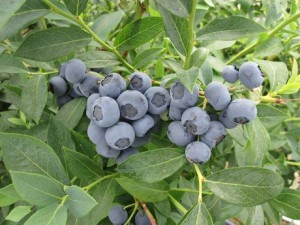Huelva’s blueberries have seen steady growth in recent years
The municipality of Almonte, in the Spanish province of Huelva, organised the 20th edition of the Technical Agricultural Conferences in partnership, among others, with Planasa. The event, attended by around 200 technicians, took place on 19 and 20 March and consisted of three formal presentations, a round table and the presentation of a book.
Antonio Soto, head of Planasa’s raspberry and blueberry research and development programme, talked about the growing popularity of blueberries with a presentation called “The worldwide development of blueberries”. The technician shared details about the fruit’s steady growth in recent years, explaining aspects such as its characteristics, the optimal cultivation techniques and the varieties better adapted to each region, depending on their temperatures.
The company, which has held a five year partnership with the North American Fall Creek, worldwide leader in blueberry production, owns the exclusive right for their sale in Europe and North Africa. “Our task is to grow North American varieties under Huelva’s conditions with local cultivation techniques and select the best varieties,” explains Antonio Soto.
It is worth noting that blueberry growing has strongly expanded in recent years due to the increasing demand from European supermarket chains. Back in 2005, 200 hectares of plantations were registered in Huelva, and in 2012, this figure had already gone up to 1,200 hectares.
“Blueberries have a long shelf life compared to other berries, like strawberries or raspberries, and adapt really well to different types of soil and weather conditions. For this reason, some Spanish companies have also started planting in Morocco, where a massive expansion is expected in the coming years,” he says.
Huelva’s blueberry production calendar extended
“Until not many years ago, blueberry growing was limited to a single variety, as the Star was the only one available, with a production period that goes between April and late May. The flavour of earlier varieties is usually not as intense, although there are exceptions, like the Ventura, which offers a great yield, marketable calibres and a very good flavour. Its production period goes from February to late April and allows producers to save in harvesting costs.”
“With Suziblue, we have obtained a variety able to compete with the Star between April and May. Both varieties are similar, but the former offers a better yield and an earlier start of the season.”
Lastly, for the period between May and June and before the produce from other European countries enters the market, Planasa managed to introduce the Camellia variety. “This late blueberry, originally from northern Europe, has adapted to Huelva’s conditions and the fruit’s original characteristics have actually improved. The plant is vigorous and the blueberries, of great flavour, reach very large calibres. It can be planted in both cold and warm areas and the use of greenhouses is not required, thus saving in production costs,” explains Antonio Soto.
Water shortages, the sector’s greatest threat
“Water shortages, without a doubt, are and will remain to be one of the biggest threats to Huelva’s berry sector, so important for the province’s economy.” However, the issue is also leading to advances in irrigation techniques, including the use of drainage water and the construction of reverse osmosis plants. “It is not a problem that cannot be solved on a technical or political level,” concludes Antonio Soto.
Fresh Plaza






